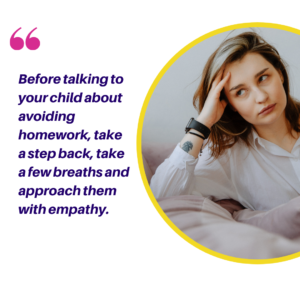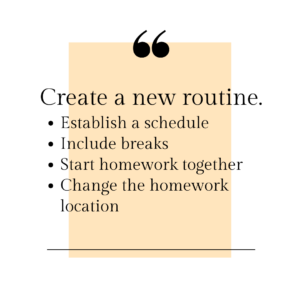You did it. You just dropped off your baby at college, and now you’re on what seems like the longest ride back home. Gone are the days of picking them up at school, making them dinner every night, ferrying them to activities, and seeing them around the house.
So, now what? After 18 years, what are you supposed to do now that they’re off at college?
The transition to college can be a challenging time for students and parents. While your teen is learning to navigate the world on their own, you’re re-learning how to lead a life that’s not heavily focused around them. It is only natural to feel a bit lost during these first few months. If you want some helpful tips on how to navigate family dynamics during the college transition, keep reading!
How to Navigate Changing Family Dynamics as Your Teen Goes to College
It’s Okay to Miss Your Child
It’s completely normal to miss your child and feel sad because they’re not at home with you, but these feelings will pass. Yes, you will always want to see them, but you’ll get used to their absence as time goes on. In the meantime, don’t feel embarrassed because you’re missing them. These feelings are totally okay.
Set Aside Some Time to Call Them
Even though going to college is supposed to help young adults to be more independent, that doesn’t mean you need
 to cut off all contact with them. At the other extreme, don’t expect to hear from your child on a daily basis: they need space to build new relationships and routines. Talk with your child and figure out a good time to call or text them. This doesn’t have to be every day, but a couple of times during the week doesn’t hurt.
to cut off all contact with them. At the other extreme, don’t expect to hear from your child on a daily basis: they need space to build new relationships and routines. Talk with your child and figure out a good time to call or text them. This doesn’t have to be every day, but a couple of times during the week doesn’t hurt.
Besides, they’re probably missing you too! They might not want to admit it, but once the initial wave of move-in excitement passes, many students struggle with homesickness in those first weeks and months of college. In fact, as many as 66% of first year students will feel homesick, so make sure you work out a ‘just right’ plan to keep everyone happy and in touch.
Plan a Family Visit
If you’re really missing your child, you can always plan a visit to see them. Did you know that most colleges have a “Parents’ Weekend”? Find out when your child’s college will host theirs, and plan to go then to take advantage of any activities hosted by the school. It’ll be a great opportunity to see them in their new home!
Find a New Outlet or Hobby to Distract Yourself
You may be continuing to work or have taken a job to pay the bills. That alone can be a big transition, along with

your child’s move to college. But in your free time, you may find the best way to cope with this new reality is to immerse yourself in a hobby or activity. This can look like going to the gym, signing up for a class you’ve always wanted to take, or finding a new volunteer opportunity or activity you enjoy doing!
Think about it: as your children start heading off to college, you’ll start having more time on your hands to do things you want to do. Don’t feel guilty if you want to do something for yourself: it’s okay to focus on you as a person with your own interests.
And this goes for both parents: if you see your spouse is also having a tough time, find a way to do something together that can take your mind off your teen. They’ll appreciate it.
Find Other Parents in the Same Situation as You
In times of change, it’s always good to have a community to support you! If you have any friends whose children are also in college, you will be a great support system for each other, as you get used to your new normal. If you don’t, no need to worry! You can go online and search for a parents’ group at your child’s college, where you can share your own feelings, and see how they’re coping too.
When something goes wrong – and it will
They get sick or injured. They fail a class. They have roommate issues. They run out of money. They may try and even have a bad experience with substances. They’re feeling anxious, lonely, or depressed. They aren’t sure the college or the program is right for them.
While you hope the first year of college will be smooth sailing, problems will crop up, and sometimes they aren’t easily resolved. As parents, your job is to support your child, but be careful not to micromanage them, even though you may want to swoop down and fix the problem.
Stay in touch and, as best you can, try to be a sounding board for your child as they work out solutions for themselves. It’s okay to offer suggestions and, if it is truly serious, to step in if you must, but wait until you know your child wants and needs more direct assistance. Be especially sensitive to mental and physical health issues and encourage your child to seek assistance early.
And then they come home
The first time or two that your student comes home, things feel different, for you and for them. Remember that they have gotten used to some independence, and that you all need to navigate this new normal. Our Home for the Holidays: A Survival Guide for College Students blog post explores some of the issues and feelings teens face when they come home for holidays and visits – it might be a useful read for you as parents as well!
When your young adult goes off to college, it can be difficult at first. You will experience a lot of new emotions, and it can feel overwhelming, but understand this is the beginning of a new chapter in their life and in yours. Just because you won’t see your child every day doesn’t mean you need to stop caring for them; it means you’ll be taking on a slightly different role. You get to step back a little and let them take more control of their lives.
Of course, if they ever need you, you’ll be there for them, but also trust yourself and know that you did everything you could to set them up for success.
Need More Help?
If you’re struggling with this time of transition, we can help. The Bougainvilla House offers parenting workshops to provide tools and strategies that may help you get used to this new chapter of your life.
Call now to find support for you and your family: (954) 764-7337
Celebrate and cheer – you have a college student in your life now!









 manage your reaction. For example, many teachers are stressed because they care intensely about the success of their students. Make sure to acknowledge when caring is the source of your stress.
manage your reaction. For example, many teachers are stressed because they care intensely about the success of their students. Make sure to acknowledge when caring is the source of your stress.



